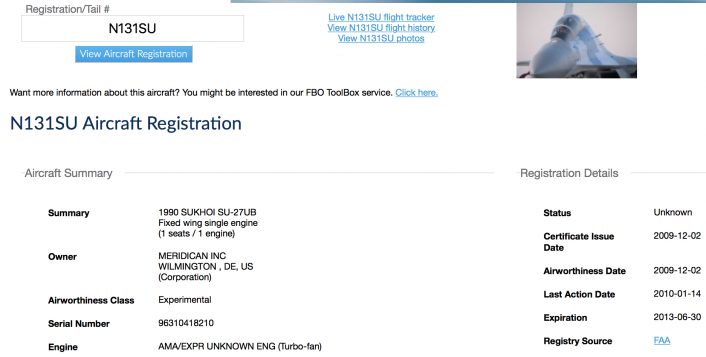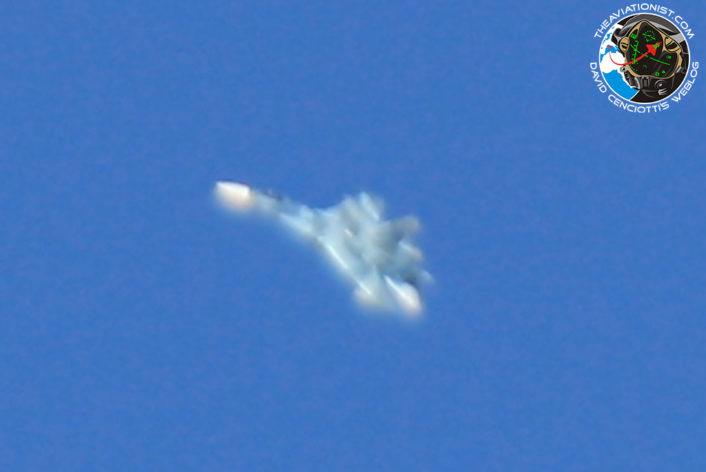America’s Pilots Fight Russian Aircraft in Training but Where Did They Come From?
It is a vast 5,000 square miles. And it is off-limits. What happens here shapes the technology and tactics that turn world history. From modern fighter tactics to cruise missiles to stealth technology. It includes the operation and evaluation of the most classified aircraft in the U.S. arsenal, the secret MiGs and Sukhois of the Nevada Test and Training Range.
On any given busy weekday, you can stand on the shoulder of Route 15, the Las Vega Freeway, a few minutes north of the Las Vegas strip at the northwest corner of Nellis AFB and get treated to one of the best airshows in the world. Along with the Mach Loop and Rainbow Canyon, this is plane spotters’ heaven. The variety of military aircraft that fly the pattern over the roadway on final approach into Nellis AFB is staggering. Aircraft from every allied nation. Fighters, bombers, attack aircraft, trainers, transports, helicopters. In the morning when they depart Nellis AFB they mostly go the same direction: northwest. That’s where the air war that never ends is constantly being fought, the Nellis Test and Training Range or “NTTR”.
Summer, 1976. Approximately 30 Miles Northwest of Nellis AFB, Nevada.
“At about eight miles I could see a single spec of black through the windscreen. I was struggling to identify the dot from its outline. It was still too small,” retired U.S. Navy F-14 Tomcat pilot and later two-star admiral Jim “Rookie” Robb told author Steve Davies in his recently updated book “Red Eagles: America’s Secret MiGs”.
“Rookie” Robb was beginning a classic head-on engagement with an enemy aircraft. A real enemy aircraft, over the Nevada desert in the western U.S. Before he saw the aircraft he was fighting, the entire project remained a secret from him.
Weighing only about one-fifth what “Rookie” Robb’s Tomcat weighed the MiG-17 “Fresco” quickly gained the tactical advantage when “Rookie” made the error of engaging the MiG in a horizontal, turning fight. The nimble MiG-17 turned inside him, the much greater weight and physics of the F-14 working against him to bleed energy in the turn until the MiG passed his wing line where he became defensive. In a matter of seconds one of America’s best fighter pilots learned that if you want to fight the MiGs in the real world, you can’t fight fair. The fight has to be three-dimensional.
This account is one of many from retired pilots who can now tell the story of the secret Russian aircraft that were obtained by the U.S. military and flown over the remote deserts of the American west.
There is no doubt that the use of Russian aircraft in training over the American west has paid dividends in combat. The now declassified “Constant Peg” training program that used Russian built MiG-21 and MiG-23 aircraft was credited with helping train the U.S. Navy F-14 pilots who shot down two Libyan Su-22s during the Gulf of Sidra crisis in 1981. And that is just one of the historical precedents of the successful program.
But there is also a history of accidents flying the Russian aircraft. Early in the program, in 1979, a MiG-17F crashed when it departed controlled flight while flying against a U.S. Navy F-5 aircraft also used as an adversary simulation aircraft. The Navy still uses the F-5 as an adversary but a recent temporary grounding took place following a crash on August 9, 2017 off Key West, Florida. These accidents emphasize the hazardous nature of not only operating opposing forces aircraft like the MiG-17F but also flying the opposing forces role in any aircraft including the U.S.-built F-5.
It is a certainty that flying Russian combat aircraft over the American western desert continues today.
As we reported earlier this year, photos as recently as Nov. 8, 2016 show a Russian-built Sukhoi Su-27 in air combat maneuvering (ACM) with a U.S. built F-16. Aviation photographer Phil Drake scored the photos from Tikaboo Peak outside Groom Lake, Nevada, between 3:00 and 3:25 PM local time that day. Short of catching photos of a classified developmental project like the old F-117 (also seen still flying in the region) or the new B-21 Raider yet to be fully disclosed, Drake’s “Red Air” photos are the greatest prize in worldwide aviation spotting. Drake’s photos created an international sensation when he released them.
Publicity about the Groom Lake Russian planes has skyrocketed since the tragic loss of Lt. Col. Eric “Doc” Schultz on September 5, 2017. Lt. Col. Schultz, an accomplished combat and test pilot with a PhD in aerospace engineering, died in an accident that likely involved an aircraft the U.S. Air Force won’t specify. Since his death, the aviation media has been filled with theories of what Lt. Col. Schultz was flying.
During the past weeks, the U.S. Air Force has not released additional information on Lt. Col. Schultz’s tragic accident. But research in published accounts of the U.S. opposing forces aircraft operations and investigation into foreign sources and at the fringes of the “dark web” reveal much more information about what is flying northwest of Nellis AFB.
We know that two Sukhoi Su-27s, NATO codename “Flanker”, were owned by a company called “Pride Aviation” prior to summer 2011. Before their ownership by Pride Aviation they were registered to “Meridican, Inc., a Wilmington, Delaware company.” One of the aircraft is listed as a “Sukhoi Su-27UB” and states it was manufactured in 1990. A U.S. air worthiness certificate was issued on December 12, 2009.
The aircraft’s registration number is, or was, N131SU. It is, for some reason, incorrectly listed as a “single engine” aircraft. The Su-27 family is, of course, twin engine. Beyond these records and others like it along with a few inquiries on aviation forums, the trail of these aircraft appears to go cold. The planes disappear.

But a pair of 18-ton Russian built combat aircraft does not just disappear.
An August 2009 report published on the Russian media source Pravda.ru says openly, “The Pentagon purchased two Russian-made Su-27 fighter jets from Ukraine. The United States will reportedly use the Russian jets to train effective counter-operation efforts.”
The August 2009 Russian media report seems to coincide within a few months of the transfer records for the Pride Aviation/Meridican Inc. Sukhois. It is a small stretch to suggest these events may be related. And if they are related, this could be the origin of the aircraft in the now famous 2016 Phil Drake/Tikaboo Peak photos.

By an interesting historical parallel, the now-retired 65th Aggressor Squadron formerly of Nellis AFB used to fly as many as 24 McDonnell-Douglas F-15 Eagle aircraft as threat aircraft for air combat training. The twin-engine F-15 mimics the size and performance of the Sukhoi Su-27. The 65th Aggressor Squadron F-15s were painted in a variety of opposing forces color schemes, some almost identical to Russian SU-27 camouflage. But in late 2014 the aggressor squadron F-15s were deactivated. Somewhat ironically, the maintenance unit that serviced the aggressor F-15s was the 757th Aircraft Maintenance Squadron and according to reports was named the “Flanker Aircraft Maintenance Unit”. “Flanker” is the NATO reporting name for the Sukhoi Su-27.
Was there a correlation between the 2014 deactivation of the Nellis AFB aggressor F-15 Eagles and the 2009 acquisition of the Russian SU-27s? Could the five years in between the two events have been used to field a secret Sukhoi SU-27 opposing force capability that may have contributed to the stand-down of the aggressor F-15s? Or, as the official reports say, were the Nellis F-15 aggressors simply stood-down due to budget concerns? While this is an interesting theory, it is no more than a theory. Although it is easy to suggest the Phil Drake/Tikaboo Peak Su-27 photos may support this theory, the reality is that only one SU-27 was photographed by Drake in 2016. It is hard to imagine a single threat aircraft or even two as cited in the early Pride Aviation/Meridican Inc. Sukhoi acquisition could perform a similar threat simulation mission as the more than twenty F-15 Eagles that were stood-down by the Nellis aggressors in 2014.

While the published accounts of declassified MiG operations over the American west provide a convenient extrapolation to new theories about Russian aircraft being used in training, their trail does go dry within the last decade. The Russian reports and “dark web” accounting of Sukhois being bought by shadowy U.S. companies shed some light on any new “black” program that may exist. And finally, the famous Phil Drake/Tikaboo Peak photos effectively render any black program with Sukhois over the desert at least somewhat grey in transparency, even without official comment.
But this fact remains: we still have no official information about all of what is flying northwest of Nellis AFB or what Lt. Col. Eric “Doc” Schultz was flying on September 5, 2017 when America lost one of its finest men.
Top image credit: Phil Drake









